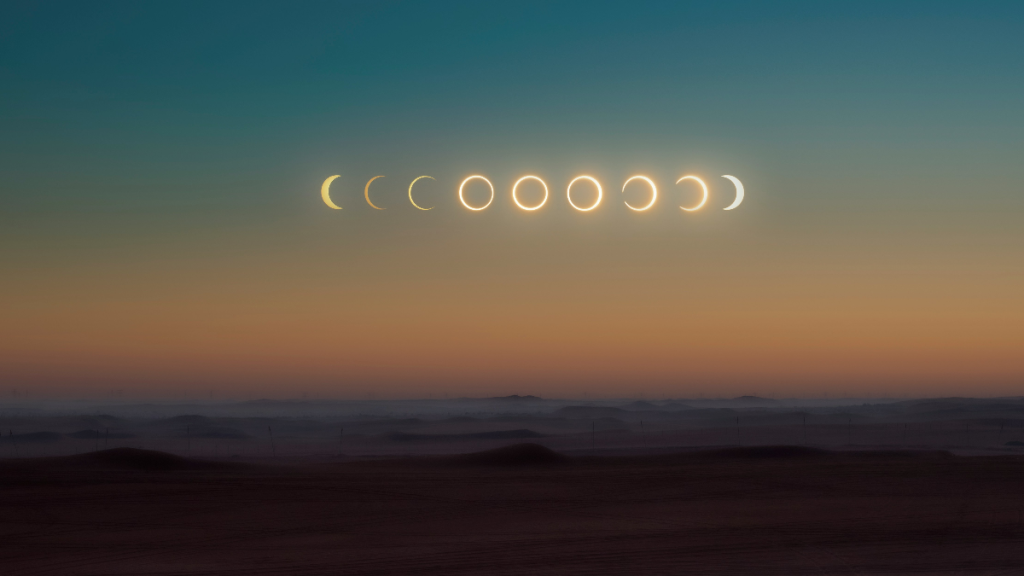Today, we see solar eclipses as beautiful and exciting spectacles, but for tens of thousands of years civilizations had no scientific understanding of the event, so they often relied on religion or spirituality to give answers. In some cases, that led to peace and wonder, and in others, it led to fear and chaos.
Videos by InspireMore
The first known recording of an eclipse dates back to November 30, 3340 B.C.E. Circular rock carvings at the Loughcrew Megalithic Monument in County Meath, Ireland, are believed to depict the moon partially covering the sun, and calculations show that they were carved around an eclipse, writes NASA.
30 November 3340 BC: The world's oldest known recording of a solar eclipse was made on stone at the Loughcrew Cairn L Megalithic Monument outside Oldcastle, in County Meath Ireland.https://t.co/ayTHbjOsPL pic.twitter.com/CwAKVIMRyU
— Irish History on this Date. (@cathaldapapa) November 30, 2023
While little is known about that particular interpretation, scientists did find grim evidence that the Neolithic-era civilization responsible for the drawings held a human sacrifice ritual due to the cosmic event.
Ancient Chinese Civilizations Believed A Cosmic Dragon Was Devouring The Sun
Moving forward in time, other civilizations offered text and artwork that gave a clearer understanding on what they believed was happening during an eclipse. In ancient China, people believed that a celestial dragon was trying to swallow the sun. And records going back more than 4,000 years read, “The sun has been eaten.”
In Chinese mythology, a celestial dragon was thought to devour the Sun during a solar eclipse. The ancient Chinese would bang drums and make loud noise to scare the dragon away and save the Sun. This myth reflects the fear and awe that eclipses inspired and the inventive… pic.twitter.com/j4g7AjMFgP
— Jeff Bellandi (@JeffBellandi) April 7, 2024
During eclipses. people would bang drums or make other loud noises to scare the dragon away. Because the sun returned, people believed they had successfully saved it, so the tradition continued for centuries.
The Incas Believed They Had Angered The Sun God, Inti
For the Incas in South America, solar eclipses were particularly worrisome because they worshipped the sun god, Inti. At that time, people believed he was all-powerful and all-loving. So they thought the disappearance of the giant star was a sign that he was angry.

To appease Inti, the Incas sometimes offered him sacrifices or would go on fasts. The emperors would also go into hiding during the events, according to Britannica.
Solar Eclipses Brought Peace To The Batammaliba People
The cosmic sights brought peace to the Batammaliba people, who lived in West Africa during the seventeenth and eighteenth centuries. They were taught that anger and fighting on Earth spread to the moon and sun—and the eclipse was them battling each other.

To quel the cosmic duel, villagers made amends with each other with the hope that the sentiment would spread to the sky.
Of course, modern science explains that a solar eclipse happens when the moon passes between the Earth, and the sun to either partially or completely cover the sun.
A large portion of the United States will be able to see a total solar eclipse on Monday (April 8) afternoon. The majority of the other areas will have a view of a partial eclipse. Read here for information on how to view the event in your area.
You can find the source of this story’s featured image here.
Want to be happier in just 5 minutes a day? Sign up for Morning Smile and join over 455,000+ people who start each day with good news.


